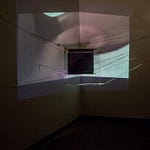There are experiences in life that seem inconceivable. Things that seem so far out there, they would have to be made-up, or from a movie. Invisible things in particular are often the hardest to contend with, quite obviously as their existence are known only through their effects. Invisible things do have real implications, and yet are often reviled to the realms of subjectivity or psychology. Subjective experiences become classist issues, or issues of power and dominance. A place where the strength of the voices, number of voices, or outrageousness of the voices are what validates truth. Yet, the truth has always been harder for me to find, to get to, and when it was…it was somehow quietly always in plain view.
Back to the conflict in conceivable and inconceivable experience, and the rise in awareness of forces people have long used: psychological conflict tactics. Mind wars which seem to echo the actions of physical wars. And while a great lot of the worlds population has profited from the physical war taking place someplace else, a more sobering reality about the allegedly safe environments we are inhabiting invites a sinking into the depths of human experience.
Are people safer living on the surface? Personally, I think they are more easily subjected to weather, whims, and falsifications. It requires labor to dig, fortitude to find out, and even more courage to continue living free from cynicism of the heart after facing the starkness of reality in all its conflicting glory.
Still years after the experience I’m about to share, linger remnants of doubt. Lab results, documented physical symptoms, research journals, and news articles don’t seem to be enough-but are all that remain. The reach for closure found its way through the desire to do everything I can, so no one else has to endure such an encounter with confusion; to offer some kind of a guide though invisible matters.
____
I’ll never forget how difficult to describe the wretched stink was. I’ll never forget my coworkers gasp, “What is that! Where is that coming from?” I had sat right beneath the air vent, where whatever made the foul smell, poured straight into the office. While I focused on my work tasks in an attempt to block out the smell, the indescribable disgust inspired groans from my coworkers filled my ears. My forehead tingled, and fatigue flooded my bones. I could step outside to get some relief, make sure I was not dreaming, and try to use focusing my mind to overcome my senses.
A bad smell is a bad smell; “So what,” I thought. I’ve changed dirty diapers, worked in the stench of food service, cleaned horrific living spaces, but this stench was undeniable; something of putrid sewage, soured air conditioning chemicals, wet basement, and dirty socks; a smell so stiff it lingered in my mind.
Eventually the smell eased up over the next several days, but strange smells continued to come and go from the office for weeks. People began to arrive to work sick. A common practice during flu season of people wanting to secure their employment and livelihoods; so I didn’t think much about it.
Focused into a quiet sense of duty, I, along with my coworkers forged on. My colleagues really did look sick. Red and runny noses, watering eyes, coughs. So even though I did not appear ill in the same way, I wondered what was really going on. I felt deeply fatigued, had intense pressure behind my eyes, swollen lymph nodes, tender and tingling muscles, and as mentioned…a tingling forehead. I would arrive feeling fine and slowly after a few hours start to experience confusion, with occasional dizziness. As a yoga practitioner for decades, having led breathing practices as an instructor, the symptoms which doctors tried to write off as anxiety did not make sense. I was never more calm. I joked if I was any calmer I might be dead. I tried to write off my senses, thinking I don’t look even half as sick as my colleagues, and therefore must be fine.
One day, on my way to take a break, I overhead someone talking about how exhausted they felt, mentioning some strange tingling and confusion. I asked what was up. After chatting a few minutes, my colleague suggested I bring up how I was feeling with the Environmental Safety Officer, and that it was best to go in person to his office in the basement of the building. She said several people, including students, had been complaining but nothing ever changed. She hoped if more people spoke up, maybe the school administration would start to take people seriously.
Not wanting to cause any kind of trouble, I wrote off my experience until I could meet with the Environmental Safety Officer and found out, me and my colleagues weren’t the only ones feeling bad. He did too, and there in fact had been complaints on-and-off for years. I brought up the idea of calling OSHA and he encouraged not to because he thought the school would get in trouble and we could lose our jobs. While it didn’t make much sense, I didn’t. At least, not at first.
I comforted myself with thoughts such as, the work place is a safe place, all practical measures are considered, generations of workers fought for safe conditions. Sexual harassment and policy pamphlets buttress welcome week trainings, and things like life rafts, safety belts, and air masks are far from mind in an office environment. Even still, the request of the Environmental Safety Officer to not call OSHA for the risk of some possible type of fine didn’t sit right with me.
The more I started to talk to my coworkers, the more I started to find out, we all were experiencing similar symptoms. Since I had only started working there recently, when I heard people who had been there for years all share the same experience, I became more nervous. They had complained for years of coffin flies in the basement, weird smells, bad headaches, fatigue, respiratory irritations, and everything got worse during the remodelling project. And I had started working there at the end of the remodelling project.
Ok, some dust had accumulated in the office. I didn’t think much of that, but I still wondered if any of my physical symptoms could have any relation to those of my colleagues and the terrible smell we experienced. I recalled my Aunt’s research on mold and environmental contaminants from a conversation we had a decade ago, at a family reunion. She served as a senior toxicologist for the Washington State Department of Health; I trusted in her research work and told her about what was going on. I had also sought support from an acupuncturist to deal with the stress. Both my Aunt and acupuncturist advised me to wear a mask. Not wanting to make a scene by wearing a mask turned out to not be such a wise choice. I had convinced myself since I didn’t know what was really going on and for the cause of not making a big deal, I was probably just fighting off something going around the office.
My family suggested I visit a doctor anyway because swollen lymph nodes persisting for more than a few weeks could indicate something serious. I had insisted my body was fighting off whatever was going around at work or physical stress of travel. Reluctantly, I went to the GP I had chosen at the start of the job. He told me to get more rest, take some vitamins, and everything would be fine.
At the start of the workdays I would feel fine, but after a few hours, the symptoms would come back. I took walks during breaks to get fresh air, since the Environmental Safety Officer had suggested to just get more fresh air if I started to feel anything strange. On my walks, I began to recall stories from people I’ve known later found their mysterious illnesses were related to mold and building material contamination. I learned from my neighbor the school she worked at also had issues, and schools were known for having risky building material practices in the past. I learned I had mistakenly believed those hazards were removed during the 80’s and 90’s.
The symptoms perpetuated, and the complaints coworkers were making eventually led to the school bringing in a their own third-party, to start testing samples collected from the office. A few of us had gone ahead and called OSHA, who said they would send someone out to take a look, but I don’t think any of us ever met anyone from OSHA. I continued to ask colleagues what we could do. Some had already filed worker injury claims. After asking HR myself, I was sent to the doctor at Reliant Medical Center, contracted by the workplace. He checked my basic vital signs and said there’s probably nothing to worry about, and left the room for awhile. When he returned, he told me he knew about the reports from my colleagues and that we could all go home, give this a rest, and we would be fine. When I received the documentation from this medical exam, several of the symptoms I had come in for were absent from the report. I called Reliant Medical Center, noting the errors. It took awhile to receive an accurate report back, but the whole time I wondered, why would a doctor not record the symptoms I was going in there for? It was a most bewildering experience to have to correct a medical document to reflect the symptoms I was coming in to have checked out, from being omitted to being contained on my document. Later on, I found out HR had also given me the incorrect injury form, and by the time I had found this out, I was even more exhausted.
At one point, I stopped by the school to check on an artwork I made as an alumni being installed inside the office I worked, to find the school closed for pest eradication. I was surprised the art wasn’t yet up, but even more surprised to find the pest control on site, and the building sealed off. On some level, it made me think someone was taking our reports seriously, and taking measures to improve the workplace.
Still not feeling well, I had gone to visit the doctor again. This time, he sent me to a specialist. At the specialist; I had a blood analysis. When the blood analysis returned, elevated levels of auto-nuclear antibodies (ANA) were found in my blood. According to the specialist, the mystery of my weird symptoms was solved. He concluded within less than 10 minutes I had a life threatening autoimmune disease. I asked him to look at my Aunt’s environmental research and impact on human health and if there could be any correlation. He quickly replied, the workplace had nothing to do with my health and without a doubt I had a serious autoimmune disease. He told me not to worry, take the prescribed pills and have my liver tested to make sure the pills didn’t make me more sick.
To say I was crushed, feels like an understatement. The diagnosis was deeply distressing to me and my family. As I read the literature on my autoimmune disease, the information conflicted with my symptoms. Moreover, the medical journals clearly stated for a specialist to make an accurate diagnosis, samples at regular intervals, over the next several months to years would have to be made. I began to resist and seek more answers.
Fear about my safety at work, exhaustion, and uncertainty about what was really going on, unexplained weight loss; the stress of being told different things from different people; having my experiences denied, utterly confused I didn’t know what was best to do. I broke down and resigned from my position, based on the condition of my health.
After leaving, I kept in touch with my colleagues and learned the chemical processors in the photos labs that had been sending exhaust-air back into the workspace had been removed. While the new exhaust ventilation was still not up to standards, things had been improved. The environmental lab samples from the office returned showing indoor irritants, mold, instability in the thermostat, and urine in the sinks. All the documents noted the contaminants were within a normal tolerance range. In other words, the report indicated something was off, but not off enough to be the cause of anyone’s health issues. The samples were based on samples gathered weeks after the initial smell, and so we may never know exactly what was really in the original mix.
All of this, happened at a respected institution of higher education. How could a place having undergone multi-million-dollar expansion project not have proper, basic ventilation? Why did the doctors deny our claims? Why is OSHA overburden and not showing up? Why would the lawyers any of my colleagues call not advise us without a report to OSHA? Loophole after loophole, we all wondered who determines what are safe levels of air contaminants? Is it normal for a healthy person to develop asthma at work? Or for an auto-immune reaction to be triggered? Was it ok for any of my colleagues to wonder what kind of effects this could have later down the road, on our health?
Several months later, I had series of more in-depth blood labs done reporting I do not carry the genetic trait needed for the autoimmune diagnosis I had been given, but that there was definitely something to keep an eye on. With a sense of relief, I resolved to keep in touch with my colleagues, who eventually moved onto different work and life situations. Years after, I still wonder what would have happened if I had taken action earlier, not been so afraid to push for faster sampling? Why were me and my colleagues not heard? And why was I so afraid to speak up in the first place?
To this day, all the known facts I have are my colleagues and my personal experiences, my Aunt’s research, the lab results, and the knowledge the building we worked in was given to the school by Microsoft, and a remodeling project can stir up old building issues. It took so much time to recover my cognitive and physical abilities. I still wonder. I’ve continued to find new research online indicating how vital the air we breathe is not only to lung health, but also the health of blood and brain functioning.
I came out of the experience, slowly, over several years and learned, strange things can happen- right under my nose. Sometimes I wonder if focusing on things in the news that are far away, made it possible for me to discredit my own experiences, rationalizing how things could be worse. If it’s possible to get caught up in concern for places I cannot physically see or reach, that makes my immediate surroundings seem less critical.
The experience still frightens me to think about, as much as the questions I still don’t have any answers to, simultaneously attempting to seek answers out and to forget about. I also wonder why MIT’s website, Undark.org, paid for this story but never published it. So I am publishing it here.
Frightening other people is the last thing I want to do. I want to be more aware, more careful, and hope others have better awareness or access to advocacy for safety. Awareness is something I will never second guess again or be scared to exercise. I hope, by sharing the troubling experience, the information can be useful or ease someone else’s trouble and suffering.
Links
Harriet Ammann http://deohs.washington.edu/faculty/ammann_harriet
Her research http://www.mold-survivor.com/harrietammann.html
Identifying symptoms: http://www.mold-survivor.com/symptoms.html
The book https://www.amazon.com/Alchemy-Air-Jewish-Scientific-Discovery-ebook/dp/B001EUGCTS
Air pollution articles
http://time.com/4480016/air-pollution-health-effects/
http://www.newsweek.com/impact-cleaning-products-lung-health-bad-20-day-cigarette-habit-study-810277
http://www.mold-survivor.com/symptoms.html
Air pollution and detrimental effects on children’s brain. The need for a multidisciplinary approach to the issue complexity and challenges https://doi.org/10.3389/fnhum.2014.00613















Share this post